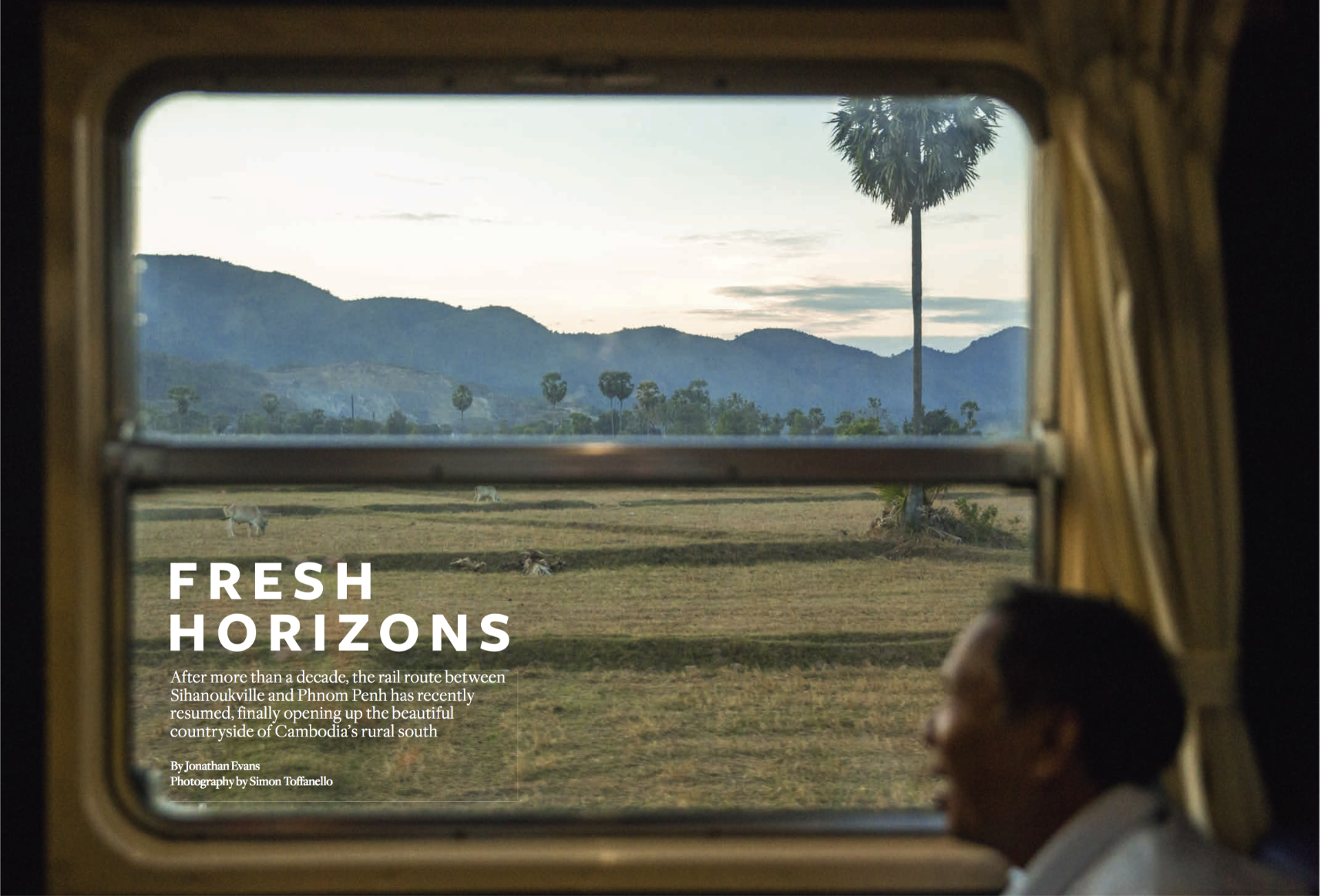Recently shot a travel photography feature for Silkwinds, Silk Air's inflight magazine covering the newly reopened Cambodian train service from Phnom Penh to the south coast.
Long gone are the romantic days of train surfing on the roof of a dilapidated Cambodian train. After 14 years the passenger service from Phnom Penh to Sihanoukville via Takeo and Kampot has been up and running for less than a year. Clean air conditioned carriages and soft seats make for a smooth ride, top speed is 60kmh. The passenger service currently runs only at the weekends. But is expected to run every other day soon. The windows in the carriages were sealed shut for the AC, But from between the carriages it is possible to open the doors and get a mix of fresh air with the odd diesel waft. A great scenic ride plus safer than bus or taxi. It is definitely worth the marginal extra time. Desapeeup la'or!
The magazine article by Jonathan Evans along with some of my photography can be found in the March issue of Silkwinds here.
Photographs from the journey can be found in the "Cambotrain" gallery.






